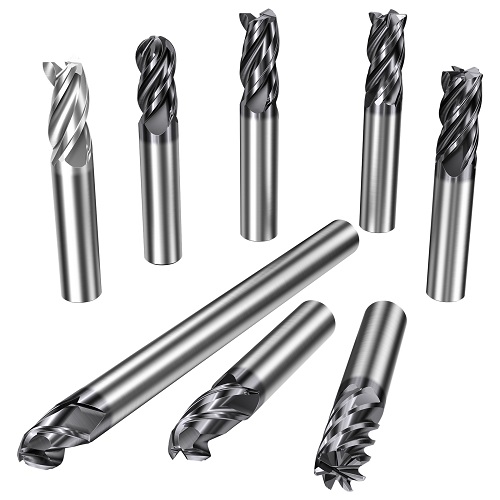
Manufacturers are diversifying in order to survive in an era of uncertainty.
“Multitasking, throughput, efficiency — these are excellent machine concepts,” said the American computer programmer and author Ellen Ullman. “But are they principles that nurture human thought and imagination?” The answer is yes for machine shops, which are diversifying into new product areas to grow more resilient but, in doing so, must deal with a wider range of tough materials. Here, Gaetano Massimo Pittalà, PhD, Principal R&D Engineer at the Solid Round Tools Business Unit, Sandvik Coromant, explains how its CoroMill® Dura solid carbide end mills can help manufacturers diversify with optimal throughput and efficiency.
According to McKinsey and Company, “The COVID-19 crisis, post pandemic economic effects, and the ongoing conflict in Ukraine have exposed the vulnerabilities of today’s global supply chains.” To gain resilience in this era of uncertainty, manufacturers are diversifying in order to survive. For example, one Sandvik Coromant customer in the US has diversified from general engineering into other sectors like aerospace, defence and medical, to a point where no one customer or industry is more than 25% of its total business.
In cases like this, diversification entails producing new and previously-unfamiliar components to tight tolerances. But the challenges don’t end there. According to another McKinsey and Company report, “Delivering products at the right time, the right quality, and the lowest cost is no longer enough.” The report continues that, “Organizations now need networks with the resilience to tolerate shocks and the agility to respond to demanding customers and fast-changing markets,” and must achieve this with, “environmental and social sustainability.”
However, diversification also means machining a wider range of difficult-to-machine materials like aluminium, titanium and Inconel. How can machine shops overcome these challenges while also realising the objective’s outlined in McKinsey and Company’s report? The answer lies in better tools together with machine tools.

Sandvik Coromant’s CoroMill® Dura range of solid carbide end mills are designed to eliminate vibrations.
Eliminating vibrations
First, let’s look more closely at the machining challenges. As written in an analysis of system parameters for machining tough materials by The International Journal of Advanced Manufacturing Technology, “Vibration is more prone to occur in milling titanium due to self-excited vibrations (i.e. chatter) between the workpiece and cutting tool,” which also applies to other difficult-to-machine materials like aluminium and Inconel.
Vibrations during the machining process have several negative consequences. They include degraded surface finishes on the component; and extra wear on the cutting edges and unpredictable wear patterns of the cutting tool. Vibrations negatively impact overall machining security and can lead to increased energy usage, costs and component quality.
Naturally, these problems are exacerbated in machine shops handling different materials as part of a diversification strategy. So, what can be done? This was the challenge Sandvik Coromant’s R&D team faced: to produce a complete range of solid carbide end mills that can eliminate vibrations while being very versatile in terms of application and materials. The range must be easy to use, while outperforming competitors’ tools in terms of productivity and tool life.
To this end, Sandvik Coromant developed CoroMill® Dura. The range comprises several solid carbide end mills, including sold carbide end mills of different lengths, diameters and designs with two, three, four, five and seven flutes. In addition, the range relies on a new patented technology from Sandvik Coromant called WhisperKutTM, which has been developed to significantly break up harmonics, while also reducing chatter and vibrations.
The WhisperKutTM technology is notable for its asymmetrical variable Helix design. It’s long been known that optimized flute spacing, along with other aspects of an end mill’s design, can greatly reduce vibrations and chatter in machining. But, with WhisperKutTM technology, each cutting flute is oriented at a different helix angle, relative to all the remaining flutes, which allows good stability and effectiveness in eliminating harmful harmonics. Because each flute is unequally spaced from the others, this reduces the constant harmonics typically produced with conventional end mills.
Because of this, CoroMill® Dura solid carbide end mills, equipped with the WhisperKutTM technology, are designed to be a one for all tooling solution. The end mills can be used in all processes needed to produce a component ― including roughing, finishing, semi-finishing and ramping. However, it was also necessary to assess whether CoroMill® Dura could outperform competitors’ mills in terms of productivity and tool life.
Versatile performance
The performance of CoroMill® Dura was then assessed in a side milling operation versus a competitor’s carbide end mill. First, for machining a DIN 42CrMo4 chromium-molybdenum steel ISO P workpiece and, second, for machining an AISI 304 stainless steel ISO M workpiece.
The DIN 42CrMo4 workpiece had an ultimate tensile strength (UTS) of 95 kg/mm2 and a Rockwell hardness (HRC) of 39. The tools’ diameter (D) measured 12.7 millimeters (mm) with a stickout, which means the distance from the tip of the tool to where the tool shank goes into the tool holder, of 33 to 40 mm.
Each tool’s performance was assessed on the total volume of material (cm3) removed from the workpiece. For a maximum material removal rate (MRR), the tools were run at a cutting speed (vc) of 150/60 m/min, a feed per tooth (fz) of 0.04 to 0.1 mm/tooth; with an axial depth of cut (ap) of 1 x D and radial depth of cut (ae) of 0.5 x D. The tools ran for a maximum of 60 minutes and coolant was applied.
Different cutting data was used for the AISI 304 workpiece, which included a vc of 80/40 m/min, an fz of 0.05 mm/tooth, an ap of 1 x D and ae of 0.5 x D. Again, the tools were run for a maximum of 60 minutes and coolant was applied.
In the end, when side milling the DIN 42CrMo4 workpiece, CoroMill® Dura gave a more than 25% improved performance over the competing solid carbide end mill, and a more than 20% improved performance when side milling AISI 304. Sandvik Coromant also tested CoroMill® Dura against a previous-generation tool from its own range, and found the newer tool be overall stronger on competitiveness, price and performance.
Based on these tests, CoroMill® Dura is proven to be a high performance tool for versatile applications. It’s well suited to the needs of machine shops that are seeking to branch out into new industry segments, or increase their focus on small batch production. With these more advanced tools, machine shops can, to paraphrase Ellen Ullman, help machine shops gain resilience with the utmost throughput and efficiency ― while also nurturing human thought and imagination.
To find out more about the advantages of CoroMill® Dura solid carbide end mills, visit Sandvik Coromant’s website.














